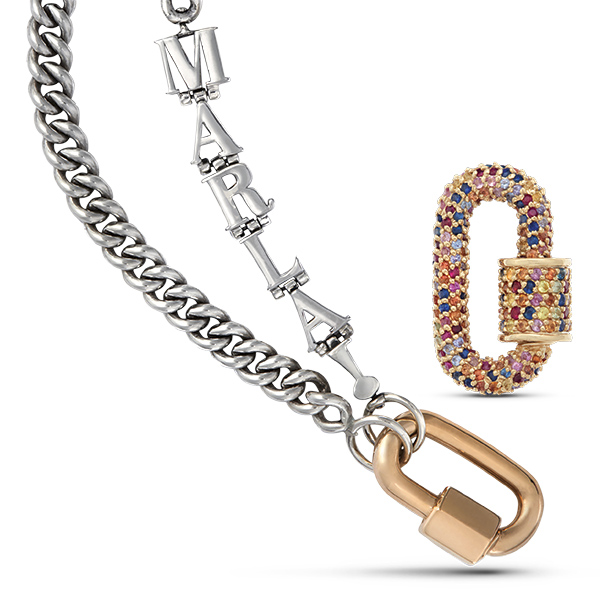
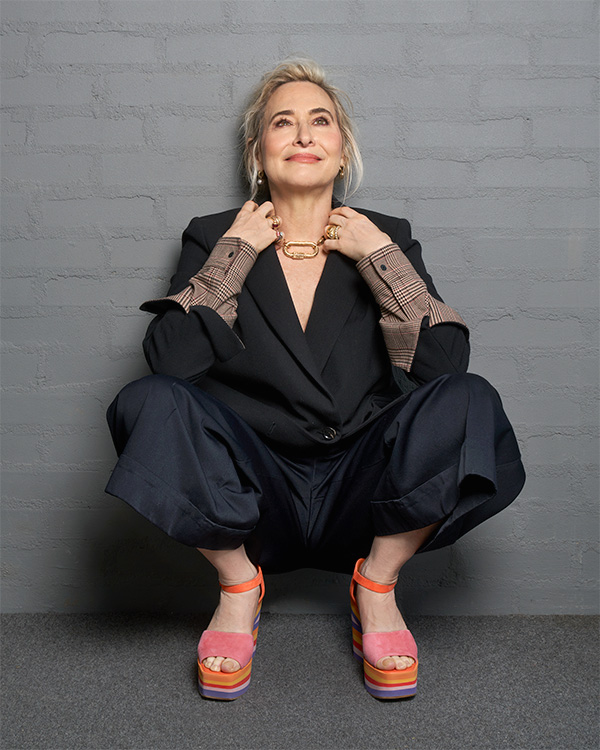
There’s more than a touch of the magician in the way Marla Aaron designs and styles her distinctive collection of fine jewelry. In Aaron’s hands, a tiny lock can be attached to multiple chains, charms, rings, and pulleys to create an intricate necklace that didn’t exist before she began looping and wrapping the individual elements. “You can double this,” she says, grabbing a thick chain and an oval lock, “and make a choker, or add another chain and drape it like this.” Completing her impressive 30-second demonstration of jewelry sleight of hand, she declares, “Everything is about iterations.”
Iterations is an understatement for a brand offering 500 different locks and more than 10,000 total SKUs, with new pieces added on a regular basis. The entire enterprise grew out of Aaron’s vision for transforming the humble carabiner—those sturdy clips used in rock-climbing—into the centerpiece of a line favored by fashion influencers, celebrities such as Sarah Jessica Parker and Julianne Moore, and women of all ages who enjoy, as Aaron puts it, “playing with their jewelry.” And she did it from scratch, after age 40, with no experience in the industry and a thick skin for rejection by jewelry-makers and retailers.
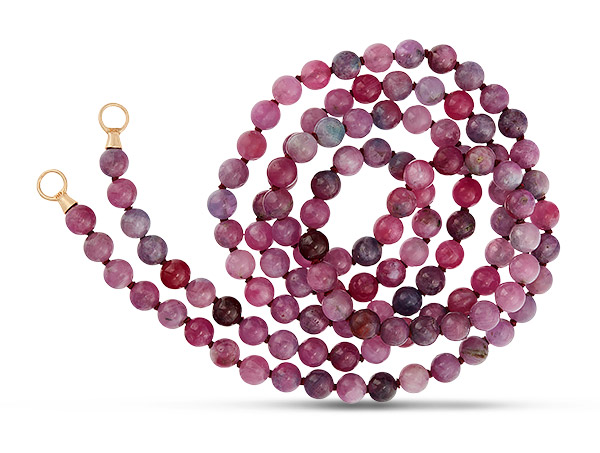
“I didn’t expect any of this to happen,” Aaron says, seated in her gorgeously appointed headquarters on a full floor high above 47th Street in Manhattan. She leased the 5,300-square-foot space in March 2020, just as the city went into lockdown, a decision that proved wise as her brand skyrocketed in popularity online during the pandemic. Billed on her website as “not quite a store, not quite a showroom,” the sun-drenched, wallpapered salon displays hundreds of locks, rings, bracelets, and chains atop an enormous orange lacquered dresser with a center section that transforms into a mirrored vanity table. Customers can make appointments with members of her sales team for in-person or virtual consultations. If they’re lucky, the designer herself might pop in to make suggestions. (More later on Aaron’s sales philosophy.)
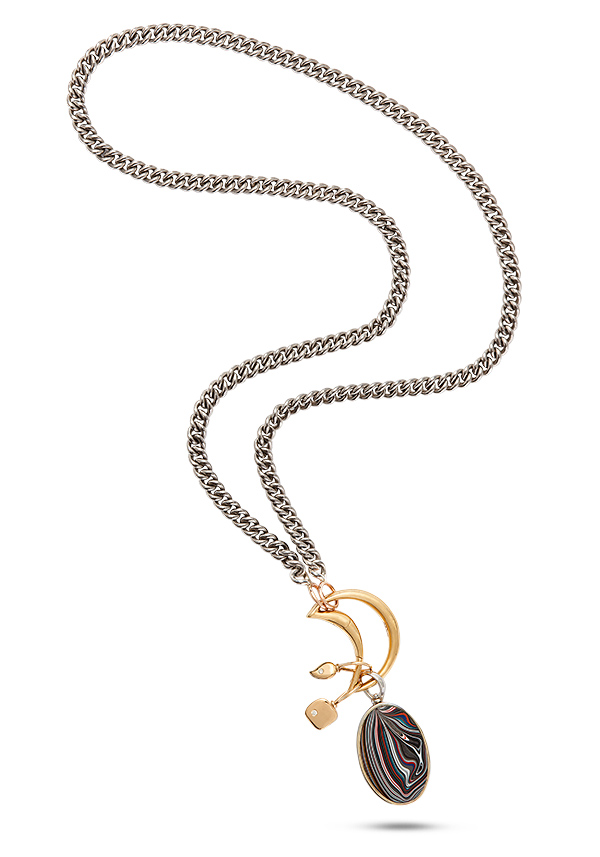
The personal touch is key to a jewelry brand that owes as much to ingenious mechanics as to beautiful design elements. “I’m not an engineer,” Aaron laughingly says of her line’s screw-closure locks, spring-closure rings, gems that twirl in their settings, and bangles that pop apart to reveal hidden engraving. “I’m just obsessed with the possibilities of making functional, personal jewelry.”
Aaron’s obsession began in childhood, when her favorite hangout spot was a hardware store, and continued through young adulthood, when she moved from her native Boston to New York City and began making jewelry for friends in her spare time. While building a career in marketing and communications at an advertising firm, she spent her lunch hours on 47th Street chatting with jewelry-makers. Playing around with lock motifs, “a lightbulb went off,” she recalls, “when I realized that with 3D printing, you could morph the shape of a lock and do so many things with it.”
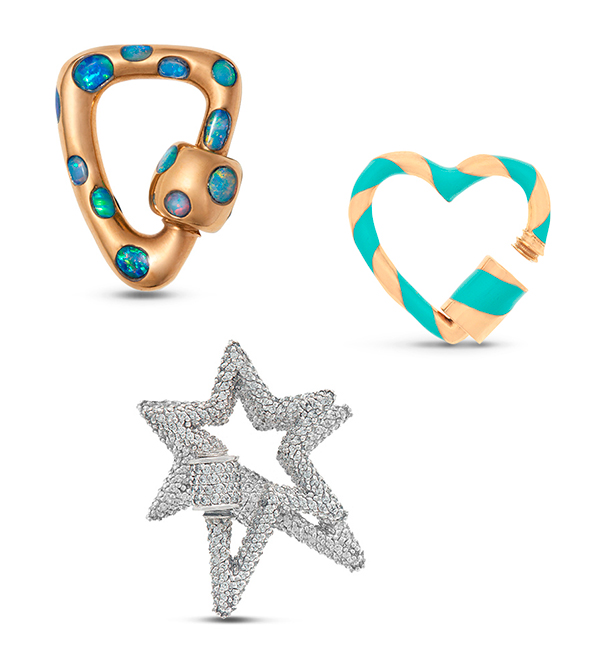
It took a while to find a bench jeweler who understood her vision of small silver and gold locks that could be attached to chains via loops on both ends. Oh, and what about adding gemstones to the lock mechanism? Or covering an entire lock in enamel or baguette diamonds? The versatility of the line may have scared off retailers, who didn’t respond to Aaron’s early pitch letters. Once she decided to quit her job in 2012 and make jewelry full-time, she discovered the power of social media, thanks to a tutorial from her then-tween sons.
Aaron came to social media from a place of caution, establishing strict rules about when and how much her two boys could use their cellphones. At the time, she says, “nobody was buying my jewelry, so one night at dinner, I said to them, ‘Why don’t you show me how to use the Instagram?’ They thought this was hilarious, but they taught me.”
Posting her first “terrible” product photos, Aaron was surprised to receive orders from as far away as Japan and Australia. Over time, she established herself as the charming face of her brand, with more than 180,000 Instagram followers and 100,000+ views of a recent selfie video in which she shared the many (many) items of jewelry she planned to wear that day. Mixed in with reels demonstrating how to style her pieces are cheeky videos in which the designer cooks chicken in a pot, does pull-ups, and applies copious amounts of blush while making fun of her age (57).
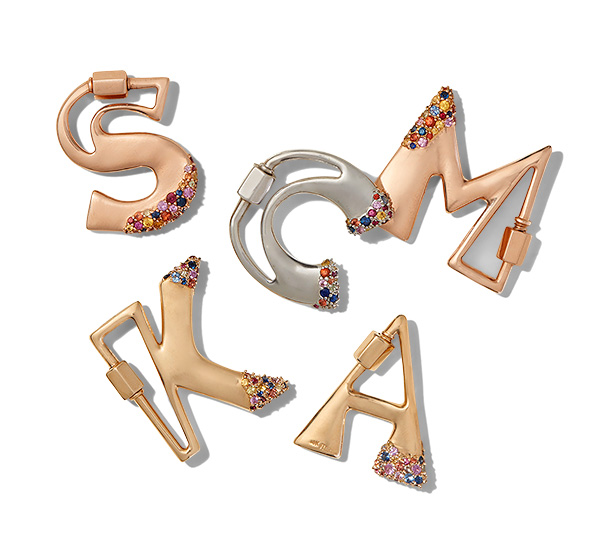
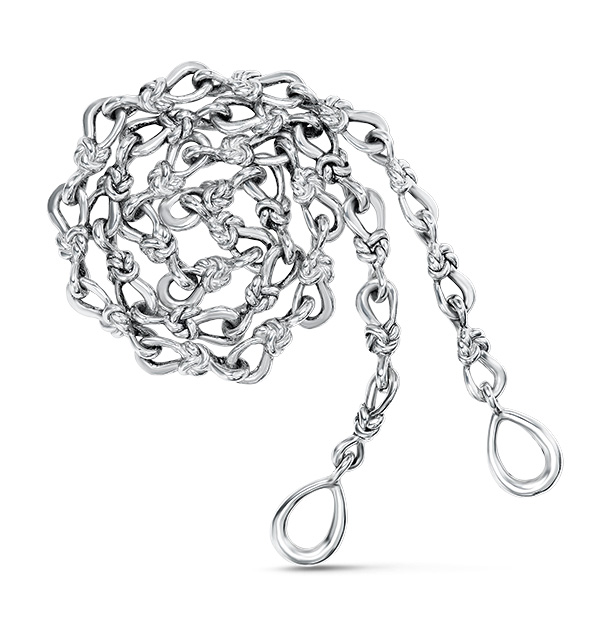
Aaron considers herself an accidental Insta star delighted by sales increases that allowed her to go from one full-time employee to 16. “I didn’t want any face of the brand,” she insists, noting that her website only recently began displaying jewelry on models. “I really wrestle with the old tropes of how jewelry is sold to people: the glistening bodies; the perfection of those images. It’s fine for the jewelry to look perfect, but the scenarios are tired.” Asked what lessons other retailers can learn from her example, she quickly responds, “Get rid of the jewelry cases. Let people sit down—not just those buying expensive things. Everybody should get to sit down. Offer them a real experience.”
Though it’s certainly possible to spend thousands on Aaron’s gem-encrusted 14k gold pieces, particularly when purchased in multiples, she proudly points out that a sterling silver Babylock retails for $110. “I have a very egalitarian approach to jewelry,” she says. “I want it to be for everybody. Many of those [initial] customers come back and add a gold lock or chain to their collections, which is great.”
With success came offers to sell Marla Aaron jewelry at Bergdorf Goodman, one of about 25 U.S. retailers currently carrying the brand. Although she is grateful to boutiques that believed in her work early on, such as Kick Pleat in Austin and Houston, Texas, she says, “it’s not like we were discovered by these phenomenal stores—our story is the customer embracing us. Interestingly, it was the antique jewelry world that first understood what we were doing. Even though our jewelry looks modern and industrial, there is a hearkening to the Victorian era of functional jewelry.”
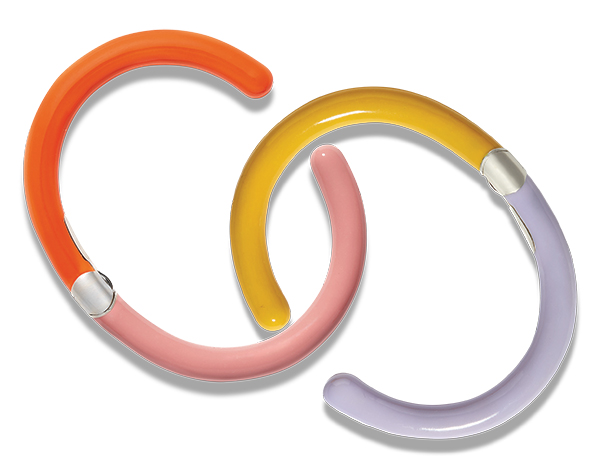
Almost all of Aaron’s pieces are produced by three workshops in New York City’s jewelry district. “Why is that important to me?” she muses. “There used to be incredible fashion manufacturing in New York, and now it’s pretty much all overseas. I don’t want that to happen to the jewelry industry. I love 47th Street, and I want to be part of keeping it alive and innovating.”
As is obvious from her designs, Aaron brims with creative ideas. During the pandemic, she set up a jewelry vending machine in Rockefeller Center selling tiny gold chairs, with proceeds benefiting laid-off restaurant workers. Formerly a single mother herself, she gifts silver heart-shape locks to 1,500 single moms every holiday season. She doesn’t sleep much and happily oversees her company’s “messy and chaotic but defined” weekly product development meetings. Simply put, in building her business, “the more I did, the more I wanted to do.” And the more she did, the more she believed in the motto on her showroom’s cocktail napkins: Jewelry has one job, and that is to bring joy to people.
Top: Talking Chain, starting at $467 (shown: 14-inch silver Heavy Curb Chain and 5 letters, $765); Chubby Babylock in 14k gold, $1,250; Marla Aaron; sales@marlaaaron.com; marlaaaron.com